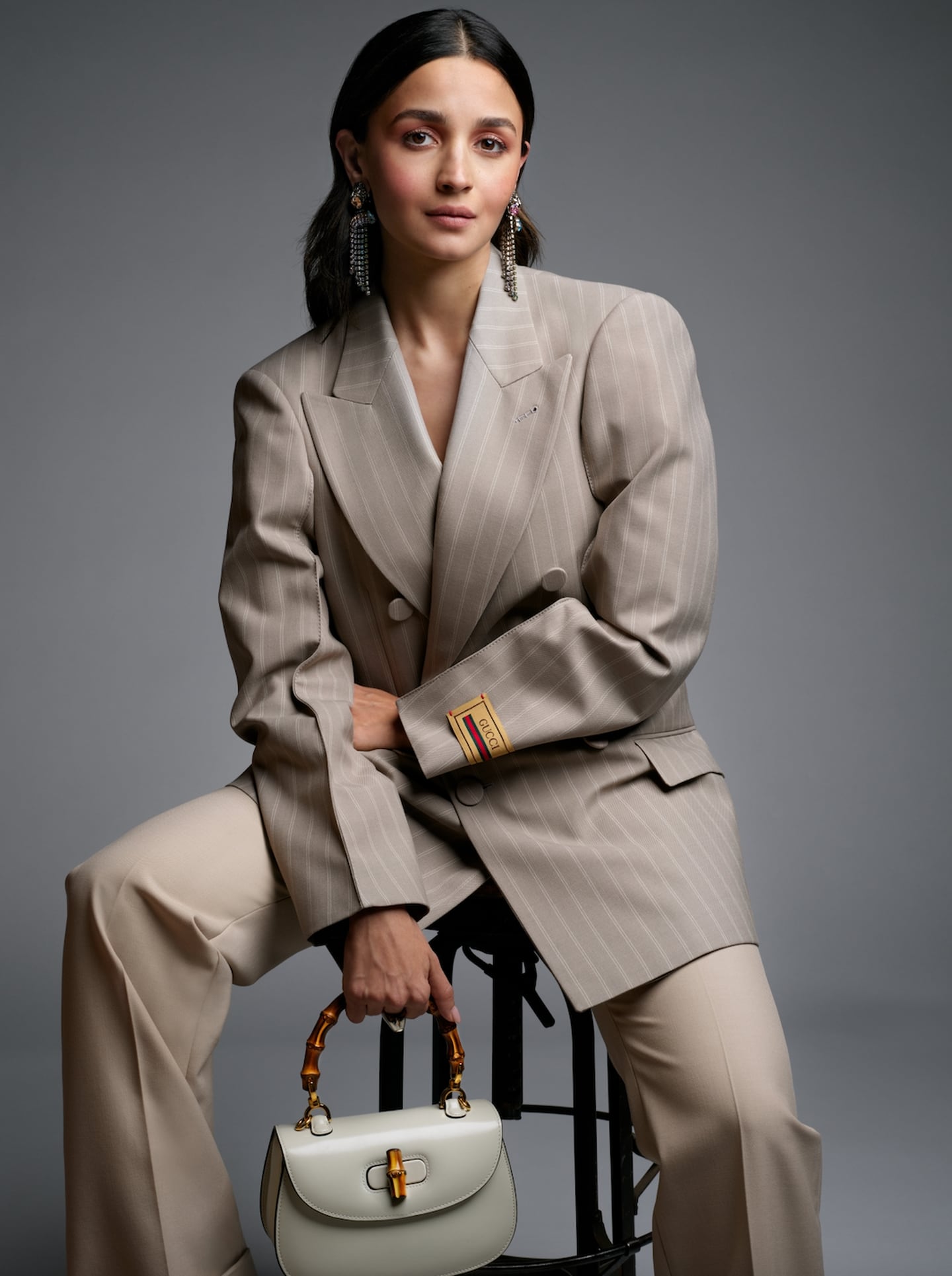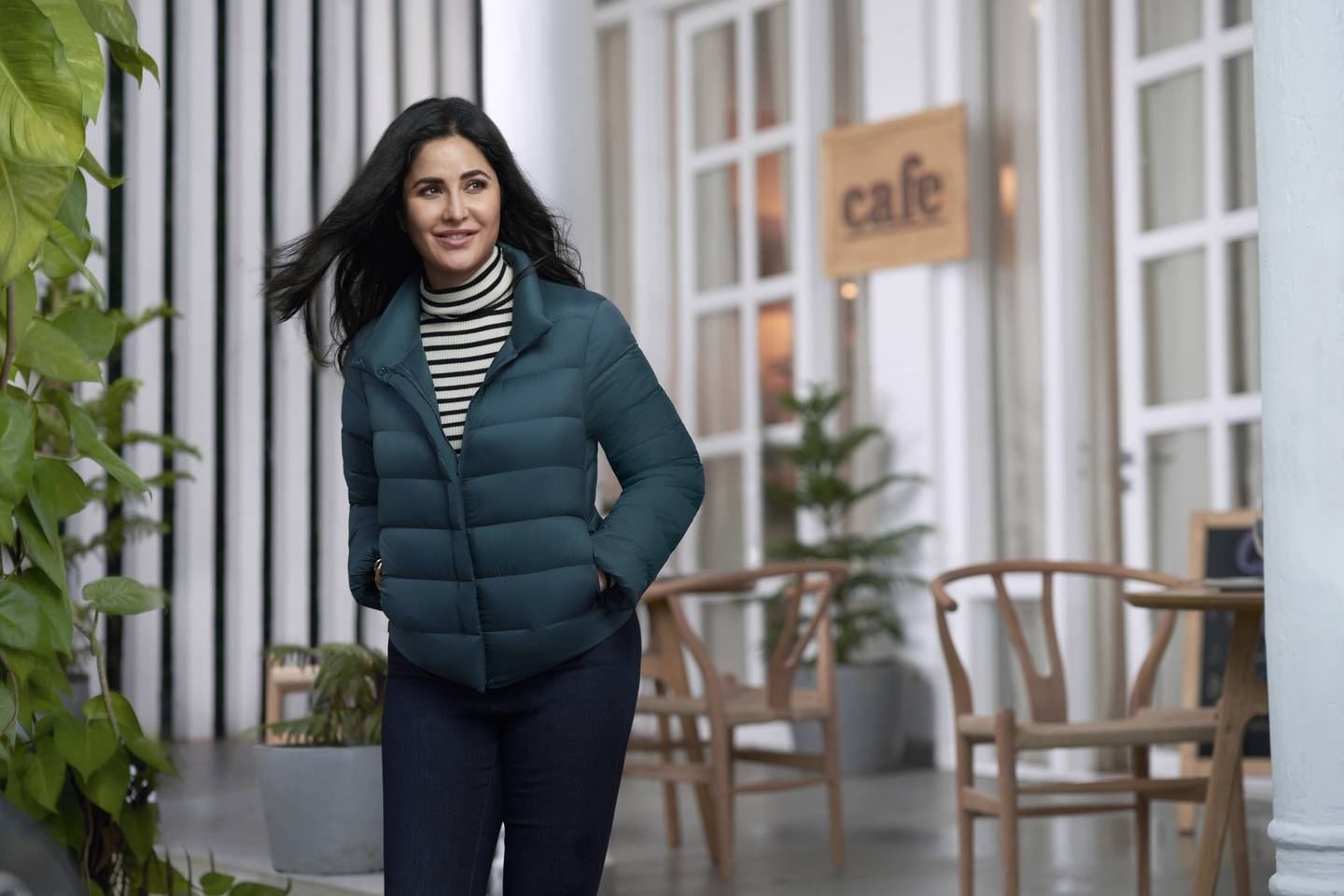
Last month, Jimmy Choo tapped Ananya Panday as brand ambassador and campaign model for its Diwali season collection. A few days before that, Uniqlo appointed Katrina Kaif as its first ‘house endorser’ in India. The two Bollywood actors joined a growing list of local film stars — Alia Bhatt for Gucci, Deepika Padukone for Louis Vuitton and Cartier, and Priyanka Chopra Jonas for Bulgari among them — roped in by international fashion brands to widen their reach to South Asian consumers.
The uptick in celebrity marketing partnerships is hardly surprising given the scale of the opportunity. Indian consumers spent $8 billion on luxury goods at the close of fiscal year 2022 and that figure is projected to more than triple by 2030, according to consultancy Bain & Company. Earlier this year, Christian Dior’s landmark show in Mumbai foreshadowed “India’s growing importance in the luxury industry [by echoing] the symbolic significance of Fendi’s 2007 fashion show on the Great Wall of China,” said Alison Bringé, chief marketing officer of social media analytics firm Launchmetrics.
The influence of Bollywood — as well as India’s regional film industries — on consumer behaviour can’t be overstated. Its biggest stars are often elevated to demi-god status. But as more and more actors secure endorsement deals for products ranging from everyday essentials to diamonds, brands that hire them will find it hard to stand out unless they widen their net to include other famous faces.
“The traditional luxury consumer in India was the socialite and that is set in the minds of marketing teams even today. They are unable to think beyond socialites, celebrities and their children. They’re not considering who’s the next big thing or who is really moving culture,” said content and creative director Santu Misra, who creates digital campaigns for celebrities, influencers and brands at events such as the Cannes Film Festival and Paris Fashion Week.
“Internationally, rappers and musicians can sell out everything from shoes and belts to jeans [for example, but] that potential has not been realised [by brands tapping musicians] in India yet,” Misra added.
Disrupting the celebrity marketing playbook by signing more Indian musicians, other types of entertainers, royals and sports stars could help some fashion companies position themselves as pioneers while reaching targeted audiences. But many global brands will find it hard to break the mould when cinema stars remains such a potent cultural force in the country.
The power of the silver screen
Marketing data confirms the bankability of Indian actors. Launchmetrics found that Deepika Padukone (who has over 77 million Instagram followers) generated media impact value (MIV) of $4.6 million for Louis Vuitton and $5.8 million for Cartier in the first half of this year. She currently has the most impressive portfolio of international endorsements including Adidas, Levi’s and Dyson hair care (as well as a former association with Chopard).
Alia Bhatt, who has more than 80 million Instagram followers, has also been highlighted by Launchmetrics for her 2023 Met Gala appearance, which garnered a total of $2.4 million in MIV at the event, and for having the top overall placement at the latest Gucci show at Milan Fashion Week compared to all other celebrities, influencers and the brand account itself.
Meanwhile, Katrina Kaif has just been announced as the face of watchmaker Rado. Uniqlo may have on-boarded her to extend its reach to her 77 million Instagram followers, but it is “her classic, fuss free, easy-going personal style [that makes] her a natural fit” for its versatile everyday clothing, said Tomohiko Sei, chief executive officer of Uniqlo India, highlighting the brand’s aim to convey authenticity in the campaign.
Surprisingly, Sonam Kapoor Ahuja — an actor often pegged as the country’s biggest fashion icon and a regular at industry shows and events — hasn’t been tapped by a global luxury brand as its face. With over 35 million Instagram followers, she was responsible for the highest MIV overall among attendees at Dior’s March India show.
“She has worn luxury brands in a way no other girls [in India] have. It’s a lost opportunity and should have happened six or seven years ago. Her impact on fashion is always going to be huge [though],” said Misra.
Beauty brands have also signed Bollywood actors in quick succession. Aishwarya Rai Bachchan (who had a decades-long association with watchmaker Longines) continues to work with L’Oréal. Bhumi Pednekar is the first India ambassador for Mac Cosmetics, Tamannaah Bhatia for Shiseido, Tara Sutaria for Bobbi Brown and Athiya Shetty for Laneige. Other notable deals include Manushi Chillar for Estée Lauder and Suhana Khan for Maybelline.
Stuck in a Bollywood rut
Misra explains that the pandemic drove even more brands to tap celebrities to earn local goodwill and add value through digital activations. Ranveer Singh, a brand ambassador for Adidas Originals who also appeared at Tiffany & Co.’s New York store launch, was one of the early movie stars to step onto this field, with his Instagram shoot for Gucci’s Jackie 1961 bag that took the Internet by storm back in June 2021.
More recent examples include Dior’s collaboration with actor Athiya Shetty for the brand’s India-inspired Lady D-Joy bag on Instagram. Shetty was also in Paris for the launch of the H&M X Rabanne collection and was the face of the high-street brand’s Diwali capsule collection.
Celebrity marketing can pay dividends in terms of brand awareness and affinity, but it doesn’t necessarily drive sales of specific aspirational products.
“Very few Indian celebrities can actually sell luxury. Only a handful like Deepika [Padukone], Alia [Bhatt] and Shah Rukh Khan [can]. It’s something I’ve been observing for a while,” said Misra, who has been credited with discovering big influencers like Kusha Kapila, Dolly Singh and Vishnu Kaushal.
According to influencer marketing data provider SocialBook, social media influencer Masoom Minawala has higher engagement rates than A-list celebrities like Padukone, Bhatt, Chopra Jonas and Kaif, even though her 1.3 million following is significantly smaller.
Minawala is one of India’s top content creators. Co-founder of digital talent management agency Schbang Maximize, she has become a well-known face in her own right and a favourite for collaborations with top brands like Louis Vuitton, Dior, Hermès, Bulgari, Chopard, Bally, Longchamp and Jimmy Choo.
“A high engagement rate means you are doing something right with your audience and captivating their emotions one way or another,” SocialBook’s creative director Julian Martinez, told BoF earlier this year.
“Minawala also has the highest influencer score [in a group including actors], which is what our system thinks is the most powerful based on their category,” Martinez said.
For her part, Minawala believes that “KOLs (key opinion leaders) like me are a lot more specific about our content and are particularly targeting the deeper pockets and higher income groups of India.”
This is one reason luxury fashion brands must engage with famous faces beyond the big names of cinema, she suggests. “The conversions to sales are higher, and we can actually track these.”
Casting a wider celebrity net
At present, most global brands have an unimaginative — even predictable — approach to celebrity marketing in India. Only a handful are thinking beyond conventional parameters.
Athletes and sports personalities are rarely engaged except by sportswear and watch brands. But the buzz around the rare joint appearance of the husband-wife duo of actor Anushka Sharma and cricketer Virat Kohli’s at Dior’s Mumbai show makes a case for luxury brands to tap into celebrity couples who sit on the intersection between film, sport and culture.
However, cricketers enjoy a cult following in their own right in India, and there is ample room to expand luxury brand associations with star players such as Virat Kohli (with over 262 million Instagram followers), Rohit Sharma (though he previously partnered with Hublot), KL Rahul, Shubman Gill and Hardik Pandya. Iconic figures like Sachin Tendulkar and MS Dhoni (who was signed for a period by Panerai in 2019) continue to have timeless appeal.
Star javelin thrower Neeraj Chopra, footballer Sunil Chhetri, tennis player Sania Mirza and badminton players PV Sindhu and Saina Nehwal may not have the fan base to rival their cricketing counterparts, but their prowess at their respective sports make them apt contenders for timely campaigns designed to capture the moment. Luxury brands willing to explore such forward-thinking ideas will come out as risk-takers, say entertainment industry leaders, and some will leave a mark.
The opportunity posed by music stars like Diljit Dosanjh, AP Dhillon and Badshah — serious luxury buyers themselves — as brand partners for local activations is largely untapped but they could help usher in entirely new cohorts of luxury consumers.
Then there is the case for India’s enterprising young royals, many of whom are actively focused on building their digital presence. Hailing from families that typically have a long history of buying from some of the world’s largest luxury and jewellery brands makes their link to the industry feel authentic. Global curiosity around royalty also makes them strong contenders for associations that go beyond the domestic market.

Dior, for instance, worked with Princess Gauravi Kumari, for its Rani Pink Lady Dior bag that was inspired by India. She is often seen at international events by that brand as well as Giambattista Valli and Cartier around the world. Another royal, polo player Sawai Padmanabh Singh, known as ‘Pacho,’ and the Maharaja of Jaipur, has become a style icon in recent years, topping global best-dressed lists, fronting magazine covers, and even walking the runway for Dolce & Gabbana back in 2018. Recently, he collaborated with Piaget, as well as Ralph Lauren and its multi-brand retail partner The Collective for digital campaigns.
“They derive their influence from a unique combination of family legacy, work, achievements, personal style and lifestyle,” said the former chief business officer of Condé Nast, India Arjun Mehra, who is now CEO of C&C Talent, a boutique firm he founded specialising in niche celebrity and talent engagement. “Brands can find merit in associating with them to touch a cord with discerning audiences in ways both aspirational and inspirational.”
Famous faces don’t necessarily need to resonate nationwide. Minawala says that it would benefit luxury brands to identify a network of local celebrities who are well-known regionally and in tier two and three cities, for marketing activations and intimate events. Their significant clout among locals holds the power to sway buying decisions. “Events co-hosted by ‘friends’ of luxury brands in general, could get a lot more immersive in India, to [achieve] deeper collaborations,” she added.
In some cases, brands could also expect to get more bang for their buck since the fees charged by local celebrities and up-and-coming names are usually far less expensive than Bollywood megastars.
Despite the glamorous personas and large social media following of megastars, some affluent consumers are actually drawn to the celebrity of a subtler, more accomplished relatable variety. “These niche celebrities also tend to associate with fewer brands… and work with brands they really like. Their associations are more believable and consequently [can] work better,” Mehra said.
Though Uniqlo partnered with megastar Kaif, timed for the opening of the Japanese brand’s first store in Mumbai, the collaboration complemented endorsements with a wider community of brand advocates from diverse backgrounds, Sei explained. Apart from content creators, the company’s social media campaigns feature fitness entrepreneurs, artists and stylists to showcase more familiar customer voices, lifestyles, and experiences.
Misra advises fashion brands to partner more with “real working girls [who are] well established in their fields.” Think homegrown media personalities, brand owners, chefs, hoteliers, artists, comedians, advocates, activists, authors and VIP consumers with influence who are on-brand and live in the public eye.
In other words, brands that expand their celebrity marketing repertoire beyond actors — and give more decision-making autonomy to local managers to identify and shape those collaborations — are often able to create groundbreaking marketing campaigns with famous faces who truly capture the zeitgeist in India.

